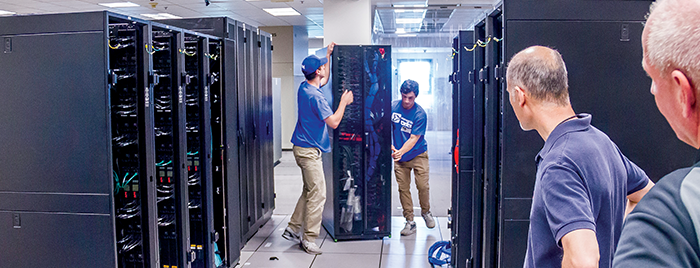In 2016, OSC brought on board the largest supercomputer in its history. Its name pays tribute to renowned Olympic sprinter, beacon for racial equality and youth advocate James C. “Jesse” Owens. Owens set or tied four collegiate world records in a single afternoon, sprinted to four gold medals and two Olympic records at the 1936 Berlin Games and dedicated much of his later life to helping youths overcome obstacles to their future success.
The Owens Cluster increases the center’s total computing capacity by a factor of four and its storage capacity by three, with aggregate throughput performance of approximately 200 gigabits per second. With $12 million in capital funds, the center not only brought in the new Dell/Intel Xeon cluster, but also upgraded disk storage and revamped infrastructure services to improve reliability and serviceability.
The new system will be powered by Dell PowerEdge servers featuring the latest family of Intel® Xeon® processors, include storage components manufactured by DDN and utilize interconnects provided by Mellanox.
Additionally, the center provides more than 140 different software packages to researchers, with about 20 of them licensed packages. Researchers can bring their own licensed software, open source packages or in-house developed applications, as well. Among the most-used software codes this past year were VASP for atomic scale materials modeling, OpenFOAM for computational fluid dynamics, LAMMPS for molecular dynamics simulation and MATLAB for numeric computation and visualization.
High performance Computing & Storage
In 2015-16, approximately 1,300 researchers across Ohio depended on several key OSC systems:
Dell Intel Xeon Owens Cluster
23,392 cores provide a total peak performance of 750 teraflops of computing power
HP Intel Xeon Phi Ruby Cluster
4,800 cores provide a total peak performance of 144 teraflops of computing power
HP Intel Xeon Oakley Cluster
8,304 cores provide a total peak performance of 154 teraflops
IBM Mass Storage Environment
Contains more than five petabytes of disk storage

